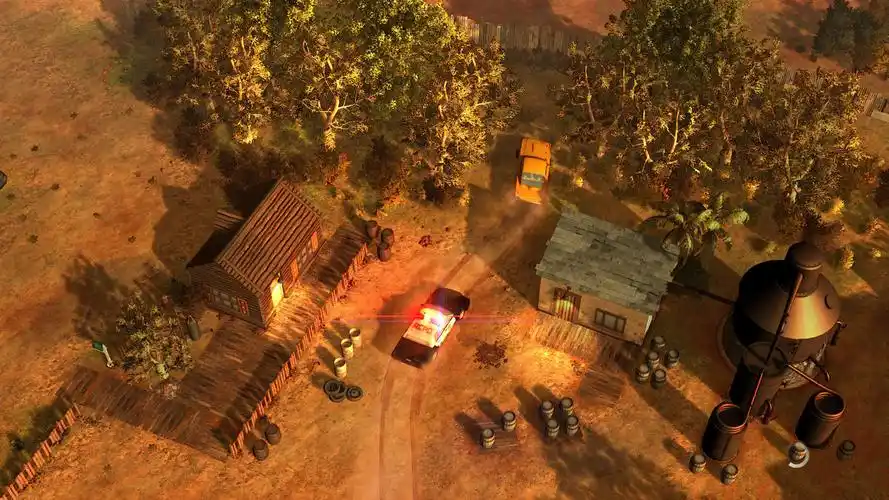Title: Beyond the Sign: How 'Loyalty Crisis Shelter Sign Installer Simulator VR' Place Missions Forge a New Genre
The virtual reality landscape is often a canvas for the fantastical: wielding lightsabers, exploring alien worlds, or slaying dragons. It is less frequently a space for the mundane, the bureaucratic, and the quietly subversive. This is what makes the cult sleeper hit, Loyalty Crisis Shelter Sign Installer Simulator VR, such a fascinating anomaly. The game’s premise is absurdly simple on its surface: you are a contractor for a nebulous, vaguely dystopian government agency, tasked with installing public signage directing citizens to their designated Loyalty Crisis Shelters. The core gameplay of drilling, wiring, and bolting placards to walls was already a masterclass in mundane immersion. However, the latest ‘Place Missions’ update doesn’t just add content; it fundamentally rewires the game’s narrative and philosophical core, transforming a quirky simulator into a profound commentary on choice, complicity, and context.
For the uninitiated, the base game operated on a straightforward loop. A work order would appear on your in-game tablet, specifying a location—a dilapidated apartment block, a sterile corporate plaza, a dusty suburban street. Using your hyper-realistic VR motion controllers, you would physically unpack your kit, align the sign, drill into the virtual concrete, and secure the stark, officious-looking sign bearing the shelter’s emblem and arrow. The genius lay in the details: the weight of the drill, the spooling of wires, the satisfying click of components locking into place. It was ASMR meets Kafka.
The ‘Place Missions’ update shatters this repetitive tranquility by introducing a layer of palpable ambiguity and moral weight. Previously, your work orders were non-negotiable. Now, the ‘Place’ system introduces dynamic environmental storytelling and player agency. You are no longer just an installer; you are a placer, and where you choose to put the sign matters.
A mission might send you to a derelict community center. The work order, as always, specifies a coordinates range, but never an exact spot. As you survey the area, your tablet’s environmental scanner pings. You find a faded mural of community heroes on one wall—a place of pride and memory. On the opposite side is a barren, stained wall next to an overflowing dumpster. The game’s objectives are complete no matter which surface you choose. Do you deface the mural with the cold, institutional signage, effectively erasing a symbol of local identity with a symbol of state control? Or do you tacitly marginalize the shelter’s directions by associating it with waste and neglect?
This is the core of the Place Missions. There are no explicit good or evil meters, no morality points pop-ups. The consequence is atmospheric, emotional, and narrative. In one memorable mission set in a dense urban alleyway, I had to choose between installing the sign high on a building, clear for all to see but impossible to read from street level, or lower on a newsstand, where it would be easily visible but partially obscured by flyers for missing persons—a haunting, unscripted juxtaposition the game’s systems effortlessly created.
The update also introduces the “Civilian Presence” algorithm. Citizens now react to your work in real-time. Install a sign in a logical, helpful, and considerate location, and you might see an NPC pause, glance at it, and nod slightly before hurrying on. Brutally mount it in the center of a children’s playground, and you’ll be met with stares of confusion, anger, or fear. Some might even approach and voice their concerns through distorted, radio-filtered dialogue: “Do they really expect us to find that in a panic?” or “They’re putting one here? What does that mean for our neighborhood?”. Your immersion is no longer just tactile; it’s social and ethical.
Furthermore, the ‘Place Missions’ weave a deeper, more cryptic narrative. Scattered data fragments and corrupted audio logs found in these new mission zones suggest that the ‘Loyalty Crisis’ itself might be a manufactured concept, a tool for social control. The shelters’ exact purposes are increasingly questioned. By giving you, the installer, a tiny sliver of autonomy, the game implicates you in this system. Your pedantic attention to the quality of your installation (is it level? are the wires tidy?) now clashes with the existential weight of its placement. You are complicit, but are you a meticulous cog in the machine or a subtle saboteur, using your limited power to minimize the visual pollution and social damage?
Technically, the update is a marvel. The new AI routines for civilians are seamlessly integrated, and the environmental storytelling is expertly crafted without feeling guided. The VR interactivity extends to your new choices; weighing a drill in your hand while you decide which wall to permanently scar is a uniquely visceral experience.

In conclusion, the ‘Place Missions’ update for Loyalty Crisis Shelter Sign Installer Simulator VR is a landmark moment in the genre of narrative simulators. It proves that true immersion isn’t just about simulating physical actions but about simulating consequence and conscience. It transforms the game from a hilarious and oddly satisfying job simulator into a powerful, silent protest game. It asks the player not just to complete a task, but to consider the footprint they leave behind. In a digital world full of loud explosions and clear-cut choices, this game’s quiet, ambiguous, and deeply personal missions about where to put a sign resonate with a surprising and profound volume. It is no longer a game about installing signs, but about installing meaning, and that is a monumental achievement.
Tags: #VRGaming #SimulatorGames #GameDesign #EthicalGaming #LoyaltyCrisisShelter #VRTech #IndieGames #NarrativeGaming #ImmersiveSim #GamingUpdate














